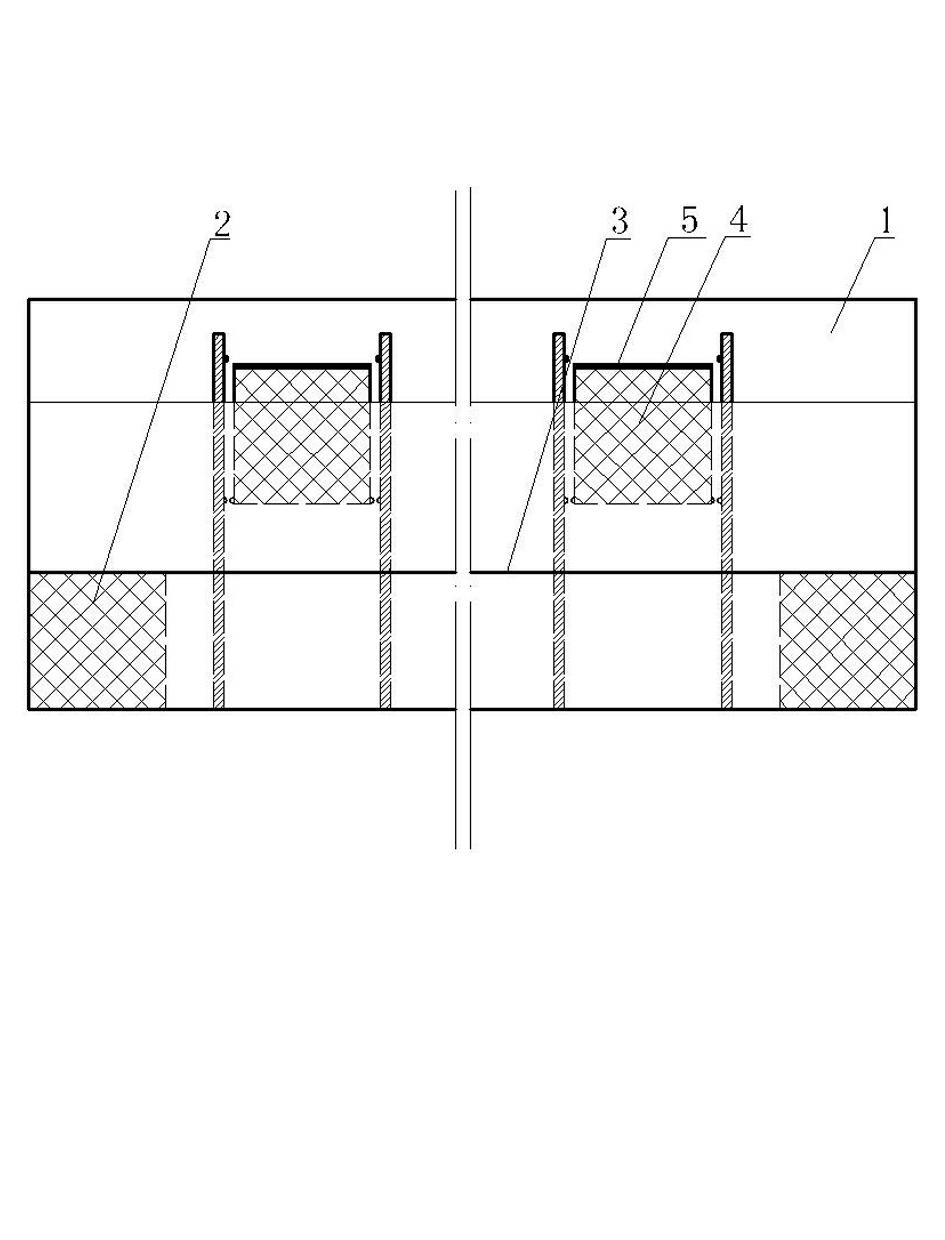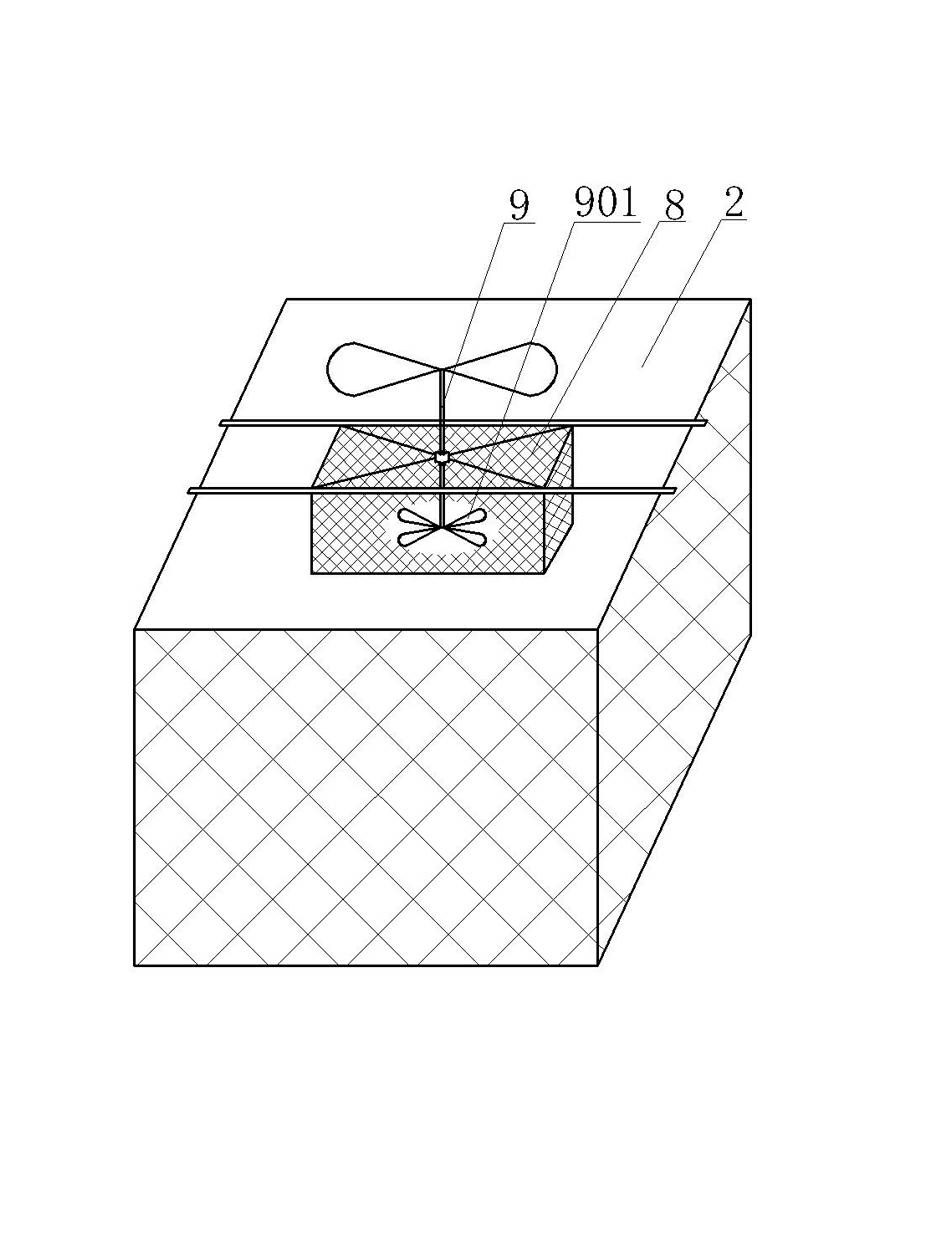Method for cultivating stichopus japonicus seedlings in earth-pond net cage
A technology of cages and earthen ponds, applied in fish farming, application, climate change adaptation, etc., can solve problems such as easy blockage of cages, malnutrition, consumption, etc., to improve survival rate and output, reduce labor intensity, and reduce costs Effect
- Summary
- Abstract
- Description
- Claims
- Application Information
AI Technical Summary
Problems solved by technology
Method used
Image
Examples
Embodiment 1
[0036] 1. Place the cage
[0037] Utilize the original japonicus pond as the earthen pond 1, place the old mink cage 2 at the bottom of the earthen pond 1, build a sunshade net 3 on the old mink cage 2 as an attachment base; Net, the net cage 4 of upper cover double-layer sunshade net 5, the long 2.0 m of net cage 4, wide 2.0 m, high 2 meters, the distance between net cages is 4m; Net cage 4 is connected with stake 6 by stay rope 7, thereby realizes the lifting of net cage 4 easily; Pond 1 is disinfected during May;
[0038] 2. Water injection
[0039] Inject clean filtered seawater 15 days before putting the seedlings, and make the net cage 4 protrude from the water surface 30cm after the water injection, so as to prevent wild shrimp, miscellaneous fish and harmful organisms from entering;
[0040] 3. Release the seedlings
[0041] From the end of June to the beginning of July, the sea cucumber seedlings are stocked in cage 4 for cultivation. The body weight of the sea cuc...
Embodiment 2
[0051] 1. Place the cage
[0052]Utilize the original japonicus pond as 1, place the old mink cage 2 at the bottom of the earthen pond 1, build a sunshade net 3 on the old mink cage 2 as an attachment base; Net, the net cage 4 of upper cover double-layer sunshade net 5, the long 3.0 m of net cage 4, wide 2.5 m, high 2.3 meters, the distance between net cages is 5m; Fix stake 6 in earthen pond 1, described Net cage 4 is connected with stake 6 by stay rope 7, thereby realizes the lifting of net cage 4 easily; Pond 1 is disinfected during May;
[0053] 2. Water injection
[0054] Inject clean filtered seawater 17 days before putting the seedlings, and make the net cage 4 protrude from the water surface 35cm after the water injection, so as to prevent wild shrimp, miscellaneous fish and harmful organisms from entering;
[0055] 3. Release the seedlings
[0056] From the end of June to the beginning of July, the sea cucumber seedlings are stocked in cage 4 for cultivation. The b...
Embodiment 3
[0066] 1. Place the cage
[0067] Utilize the original japonicus pond as the earthen pond 1, place the old mink cage 2 at the bottom of the earthen pond 1, build a sunshade net 3 on the old mink cage 2 and do the attachment base; The net cage 4 of screen cloth, upper cover double-layer sunshade net 5, the long 4.0 m of net cage 4, wide 3.0 m, high 2.5 meters, the distance between net cages is 6m; Described net cage 4 is connected with stake 6 by stay rope 7, thereby realizes the lifting of net cage 4 easily; Pond 1 is disinfected during May;
[0068] 2. Water injection
[0069] Inject clean filtered seawater 20 days before the seedlings are put, and after water injection, the net cage 4 is exposed to 40 cm above the water surface, so as to prevent wild shrimp, miscellaneous fish and harmful organisms from entering;
[0070] 3. Release the seedlings
[0071] From the end of June to the beginning of July, the sea cucumber seedlings are stocked in cage 4 for cultivation. The b...
PUM
 Login to View More
Login to View More Abstract
Description
Claims
Application Information
 Login to View More
Login to View More - R&D
- Intellectual Property
- Life Sciences
- Materials
- Tech Scout
- Unparalleled Data Quality
- Higher Quality Content
- 60% Fewer Hallucinations
Browse by: Latest US Patents, China's latest patents, Technical Efficacy Thesaurus, Application Domain, Technology Topic, Popular Technical Reports.
© 2025 PatSnap. All rights reserved.Legal|Privacy policy|Modern Slavery Act Transparency Statement|Sitemap|About US| Contact US: help@patsnap.com



